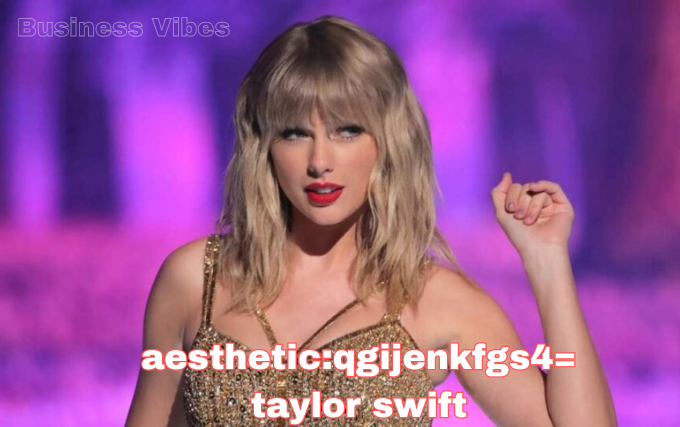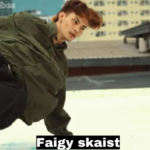Taylor Swift is not only one of the most successful musicians of our time, but she is also a trendsetter whose personal style and visual aesthetics have evolved dramatically throughout her career. From her early days in country music to her current reign as a global pop superstar, Swift has crafted a distinct and ever-changing aesthetic that mirrors her artistic growth and personal experiences. This article will delve into the aesthetic evolution of Taylor Swift, exploring how her style, imagery, and music videos have contributed to her brand and artistic identity.
Taylor Swift’s Aesthetic Journey
Taylor Swift’s career has spanned more than a decade, with each album marking a new era in both her music and visual presentation. Over the years, she has transformed from a curly-haired country singer to a polished pop sensation, continually redefining her aesthetic. Her journey is not only about fashion and beauty but also the visual storytelling in her music videos, album covers, and stage performances. As we explore the various phases of Taylor Swift’s aesthetic, we will also look at how these changes reflect her personal growth and shifting narrative.
The Country Girl: Taylor’s Early Aesthetic
1. The “Fearless” Era
During the early stages of her career, Taylor Swift was introduced to the world as a fresh-faced country artist. Her aesthetic at this time was simple and wholesome, characterized by youthful innocence. Some key features of this era include:
- Signature Curls: Swift’s long, curly blonde hair became iconic, symbolizing her youth and country roots.
- Cowboy Boots: As a country singer, cowboy boots were a staple in her wardrobe, often paired with sundresses.
- Acoustic Guitars: In her performances and music videos, Taylor was often seen with an acoustic guitar, enhancing her image as a sincere, storytelling singer-songwriter.
Her music videos during this period, like “Teardrops on My Guitar” and “Love Story,” focused on romantic, fairy-tale-like imagery that aligned with her youthful, dreamy aesthetic.
Transition to Pop: Redefining Taylor’s Image
2. The “Red” Era
With the release of her album Red, Taylor Swift began her transition from country to pop, and her aesthetic shifted to reflect this evolution. Red marked a bolder, edgier version of Taylor, showcasing both her personal and artistic maturity.
- Bangs and Straight Hair: This era saw Taylor sporting sleek bangs and straighter hair, signaling a departure from her previous country look.
- Red Lipstick: One of the most iconic aspects of this phase was her bold red lipstick, which became a signature element of her style.
- Vintage-Inspired Fashion: Swift began embracing a more retro aesthetic, incorporating vintage-inspired outfits like high-waisted shorts, polka-dot dresses, and classic feminine silhouettes.
The music videos from this era, such as “We Are Never Ever Getting Back Together” and “I Knew You Were Trouble,” were more stylized and cinematic, incorporating a mix of fun, heartbreak, and drama that highlighted the album’s themes of love and loss.
The “1989” Era: Embracing Full Pop Stardom
3. The “1989” Aesthetic
With 1989, Taylor Swift fully embraced her transformation into a pop icon. This album was a celebration of synth-pop and marked a sharp break from her country roots. The aesthetic of the 1989 era was clean, modern, and polished, reflecting a more confident and mature Taylor.
- Polished Hair and Makeup: Swift opted for a more refined look with a bob haircut and perfect makeup, including her signature red lips.
- Monochrome and Minimalism: Her outfits became more minimalist, often featuring sleek, monochromatic designs that gave her a more grown-up, fashion-forward look.
- Pastel and Bright Colors: The music videos from 1989, such as “Shake It Off” and “Blank Space,” featured bold colors and stylized visuals, embracing both playfulness and artistic sophistication.
This era not only cemented her place in pop music but also showcased her ability to reinvent herself visually. The 1989 world tour was known for its striking costumes and high-concept staging, further enhancing her image as a pop powerhouse.
The Darker Side: The “Reputation” Era
4. The “Reputation” Era
After taking a break from the public eye, Taylor Swift reemerged with Reputation, an album that introduced a much darker and edgier aesthetic. This era was defined by themes of rebirth, defiance, and reclaiming her narrative in the face of media backlash.
- Darker Color Palette: Black, metallics, and snake motifs dominated her fashion choices, signaling a darker, more rebellious side of Swift.
- Bold, Edgy Makeup: In contrast to her previous looks, Swift adopted heavier eye makeup and darker lipstick to align with the intense themes of the album.
- Military and Combat-Inspired Fashion: In music videos like “Look What You Made Me Do,” Taylor wore militaristic and combat-inspired outfits, representing her readiness to fight back against her critics.
The Reputation era showed a new side of Taylor Swift—one that was not afraid to embrace controversy and confront her public persona head-on. The album’s visuals, including the snake imagery, reflected her willingness to shed her old image and adopt a more aggressive, unapologetic persona.
The “Lover” Era: A Return to Softness
5. The “Lover” Aesthetic
After the darkness of Reputation, Swift shifted back to a lighter, more whimsical aesthetic with Lover. This era was filled with pastel colors, romantic themes, and a sense of peace and joy, symbolizing her newfound personal and creative freedom.
- Pastels and Bright Colors: The Lover era embraced soft, pastel hues like pinks, blues, and purples. The music video for the title track “Lover” perfectly encapsulates this dreamy aesthetic.
- Romantic and Feminine Fashion: Taylor’s outfits in this era featured flowy dresses, lace, and florals, reflecting the album’s themes of love and romance.
- Playful Imagery: Music videos like “You Need to Calm Down” showcased a more playful side of Swift, using vibrant visuals and colorful sets.
The Lover era represented a period of happiness and contentment for Taylor, with a strong focus on personal relationships and emotional vulnerability.
The Folklore and Evermore Era: Aesthetic Reinvention
6. The “Folklore” and “Evermore” Aesthetic
With Folklore and Evermore, Taylor Swift entered a new phase of her artistic career, opting for a more stripped-back, indie-folk aesthetic. These albums marked a shift away from pop and toward introspective storytelling and acoustic sounds.
- Muted, Earthy Tones: The aesthetic of this era was characterized by muted colors, natural landscapes, and vintage-inspired fashion. Plaid coats, cozy cardigans, and earthy hues became staples of her wardrobe.
- Minimalist Makeup and Hair: Taylor embraced a more natural look, with simple makeup and loose, wavy hair. This aesthetic aligned with the raw, emotional nature of the albums.
- Cottagecore Aesthetic: Both Folklore and Evermore embraced the “cottagecore” aesthetic, with visuals that emphasized nature, simplicity, and rural settings.
Conclusion
Taylor Swift’s aesthetic journey is a testament to her ability to evolve both as an artist and as a cultural icon. From her early country days with youthful curls and cowboy boots to her polished pop star looks and introspective folk phases, each era has brought a new visual identity that reflects her personal growth and artistic exploration. Swift’s ability to adapt and redefine herself has kept her relevant, inspiring millions around the world. As she continues to create, her ever-evolving aesthetic will remain a defining aspect of her lasting influence in music and fashion.








